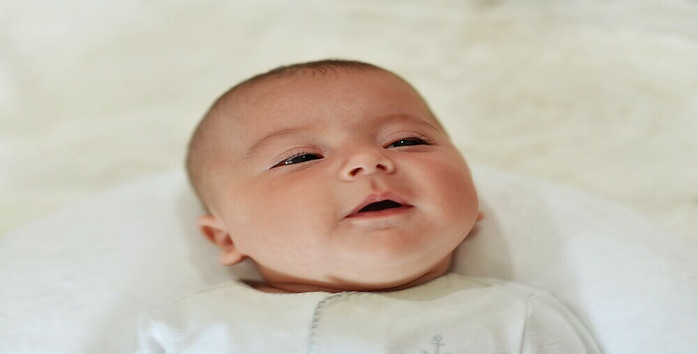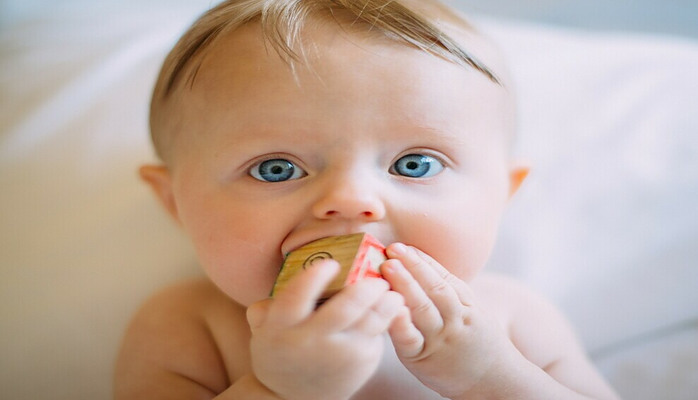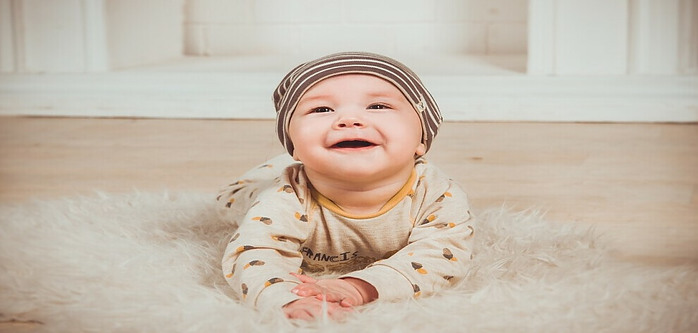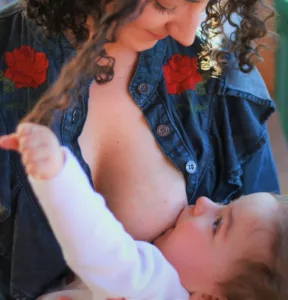Embarking on the beautiful journey of parenthood brings a galaxy of new experiences and joys. Among these, tracking your baby’s growth and development month by month is a wondrous aspect that cultivates deep bonds and fulfills innate curiosity. But remember, it’s not a race – every child is unique, and they each embrace these stages on their personal timeline.
Understanding baby milestones gives you a roadmap to your little one’s growth. It’s like having a developmental diary that not only records physical accomplishments but also cognitive and emotional growth. This isn’t just about first steps or words; it’s about the unfolding miracle of human development.
I’m going to guide you through what you might expect in this incredible first year, offering a glimpse into the unfolding of various skills and behaviors. While some babies might leap through their milestones, others take the scenic route. That’s entirely normal, and in no way suggests a future valedictorian or a laid-back artist. It’s essential to savor these milestones while also being open to the wide spectrum of ‘normal’.
You’ll find out about what marvels can surprise you in the first month. It’s a time predominantly about adjusting to the new environment outside the womb. We’re going to look at the instinctual reflexes, the early signs of awareness, and the powerful importance of those first many cuddles and coos.

Month 1: Welcoming a New World
I’m here to help you decode the whirlwind first month of your little one’s life. This isn’t just about a checklist of milestones; it’s also about understanding and appreciating the incredible transformations your baby is going through.
In the first four weeks, you’re going to find out about your baby’s initial reflexes, like the rooting reflex that helps your baby turn toward food and the startle reflex, which may not win them any poker games, but is perfectly normal.
Your baby’s physical and sensory developments are remarkable during this period. Most newborns can see objects about 8 to 12 inches away – just the right distance to gaze into your eyes while feeding. Their hearing is fully developed too, so go ahead and talk or sing to your baby; they’re listening!
Let’s not forget the importance of parental interaction and bonding. Skin-to-skin contact and responding to their needs lays the groundwork for emotional and social growth. So while they might not be ready for playdates just yet, your newborn cherishes these close moments with you.
Month 2-3: Observing the First Signs of Recognition
I’m going to walk you through a transformative stage in your baby’s life: the second and third months. This is when you’re likely to witness your baby’s first real smile — not just gas, but a genuine expression of joy. And believe me, it’s a game-changer for any parent.
You’re also going to find out about how your baby starts to master the art of hand-eye coordination. They’ll begin tracking moving objects with their eyes and gradually learn to bring their hands together and bat at toys. This coordination isn’t just cute to watch; it’s critical for their developing brain.
Another milestone to keep an eye (or should I say ear?) out for is the recognition of familiar voices and sounds. Your little one may start to show excitement or calmness when hearing your voice, indicating their growing emotional and social intelligence.
But this isn’t just about celebrating these milestones; it’s also about nurturing them. Talk to your baby often, sing songs, and play simple games like peek-a-boo. These interactions are their first lessons in communication and help strengthen your bond.
Remember, each child is unique, and the timeline for reaching these milestones may vary. Don’t worry too much about the exact timing — it’s all about progress, not perfection. If you have any concerns, your pediatrician is a valuable resource for guidance and reassurance.
Now, as we look ahead, you can anticipate even more exciting developments. In the next section, we’ll explore how your baby starts to engage even more with the world around them during months four to six — from gaining the strength to roll over and sit up to expressing themselves through delightful bouts of babbling.

Month 4-6: Exploring and Learning
Now that you’re familiar with the first couple months let’s talk about months four through six. This is a time full of excitement as your baby begins exploring the world around them in earnest. You’re going to find out about some substantial milestones that are usually reached during this period.
You can expect to see motor skills blossoming as your little one starts to roll over both ways and may even begin sitting up with support. That’s not just about stronger muscles, it’s also about brain development that coordinates these new movements. Watch for these signs of physical growth and provide plenty of supervised tummy time to foster motor skill development.
In terms of communication, your baby is going to start experimenting with sounds beyond crying. I’m talking about babbling here—those cute sounds and early attempts at speech. Listen for repeated syllables like ‘ba-ba’ or ‘ga-ga.’ Encourage this by talking and singing to your baby, mirroring their sounds, and providing a dynamic verbal environment.
Remember, this isn’t just about motor skills and language. Your baby’s digestive system is maturing, which means you might start introducing solids. This is more than just a new way of eating; it’s a developmental landmark that involves taste, texture, and the mechanics of moving food in the mouth. Always consult with your pediatrician to know when and how to integrate solid foods appropriately.
As we transition into the next stage, your baby’s newfound abilities will lay the groundwork for even more exciting developments. You can always adjust your approach down the road, but for now, focus on creating a nurturing and responsive environment as your baby embarks on this journey of growth.

Month 7-9: The Age of Mobility
I’m going to take you through one of the most exciting times in your baby’s early life – the surge of mobility! Hitting the 7-9 month mark means your little one might start experimenting with crawling. Don’t worry too much about the ‘traditional’ crawl; some babies do a commando-style belly crawl, while others shuffle on their bottoms or perform a charming bear walk on all fours.
Now what could be cuter than watching your baby’s tiny fingers master the art of picking up small objects? It’s called the pincer grasp, and it’s a game-changer. This is where they start to hold things between their thumb and forefinger, making mealtimes an adventure and expanding their exploration of textures and shapes.
But it isn’t just physical milestones they’re conquering. Babies at this age also grow more socially aware. You may notice your child may become wary or shy around strangers – that’s stranger anxiety, and it’s a normal part of their development. Also watch for those sweet, intentional affections like hugs and kisses shared with you, signaling blossoming social skills.
Choose something that resonates with you to support your munchkin through this phase. Baby-proofing your space to safeguard their spontaneous explorations? Check. Engaging with them during playtime to reinforce learning and bonding? Absolutely. Each family will find its rhythm as babies motor through these months.

Supporting Your Baby’s Development: Tips for Parents
You’ve watched your baby’s incredible growth from a newborn to an active, curious pre-toddler. As you approach the one-year mark, it’s amazing to reflect on how each month brought new developments and joys. Now, I’m going to offer some strategies to help you foster your baby’s growth and prepare for the toddler years ahead.
Creating a stimulating environment at home doesn’t have to be expensive or complicated. Choose simple toys that encourage exploration and imagination. Talk and read to your baby as much as possible; the sounds and rhythms of your voice are more entertaining and educational than any electronic device. Remember, your interaction is key in developing their language and social skills.
Regular pediatric checkups are crucial. They help track your baby’s progress and ensure they are meeting their milestones. These visits are the perfect time to discuss any concerns with your pediatrician. Developmental screenings can catch early signs of delay, so trust your instincts—if something feels off, bring it up.
Finally, understanding your baby’s cues and responding to them builds trust and security. Each baby is unique, and while guides can give you a general roadmap, your baby will do things at their own pace. So don’t worry too much if your little one isn’t following the exact timeline for milestones.
In my opinion, the most important tip I can give you is to cherish these moments. The first year is fleeting, and while it’s filled with late nights and new challenges, it’s also packed with unforgettable milestones. I really hope that you find joy in every little step of progress your baby makes. Remember, each new skill they acquire is a stepping stone towards a lifetime of learning.



